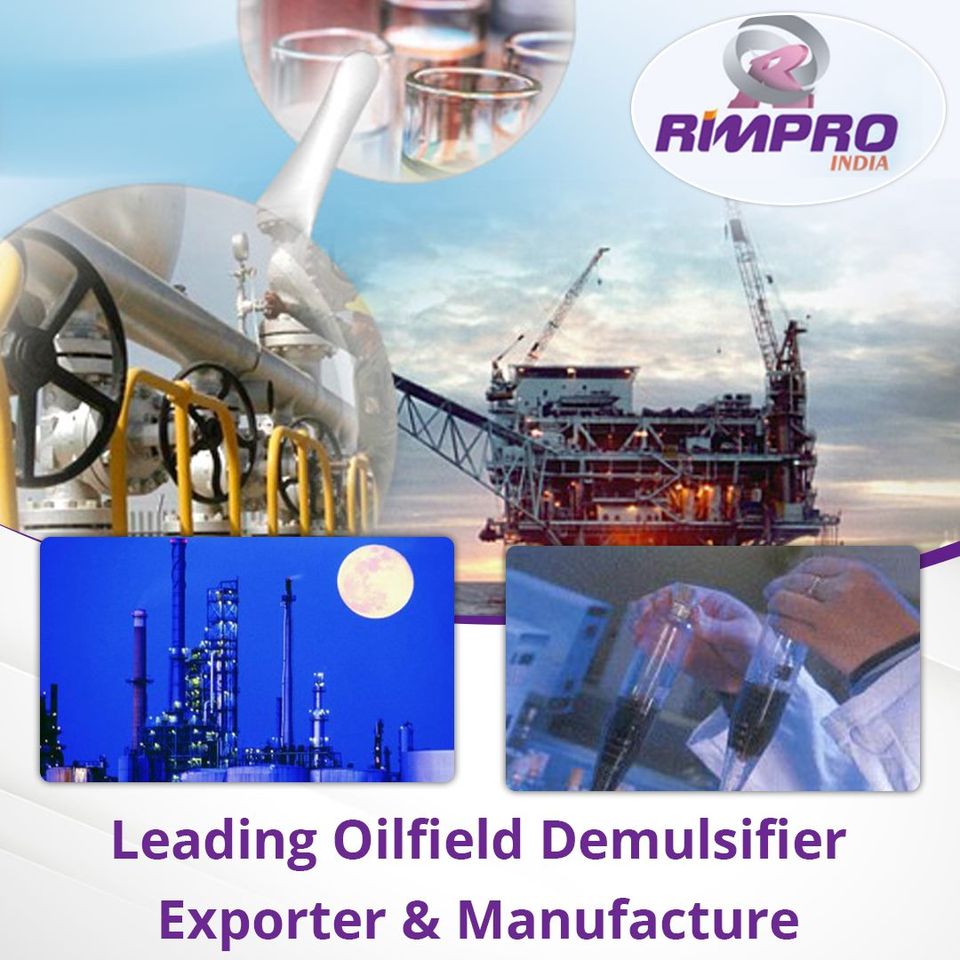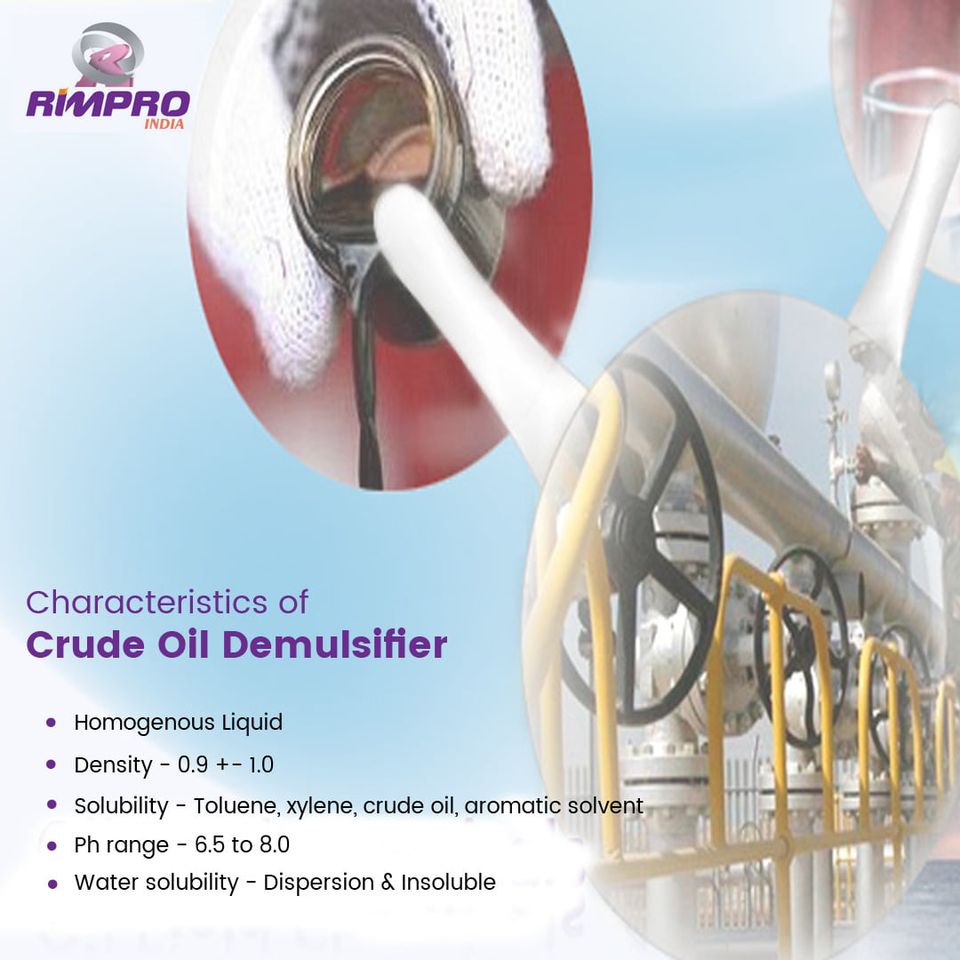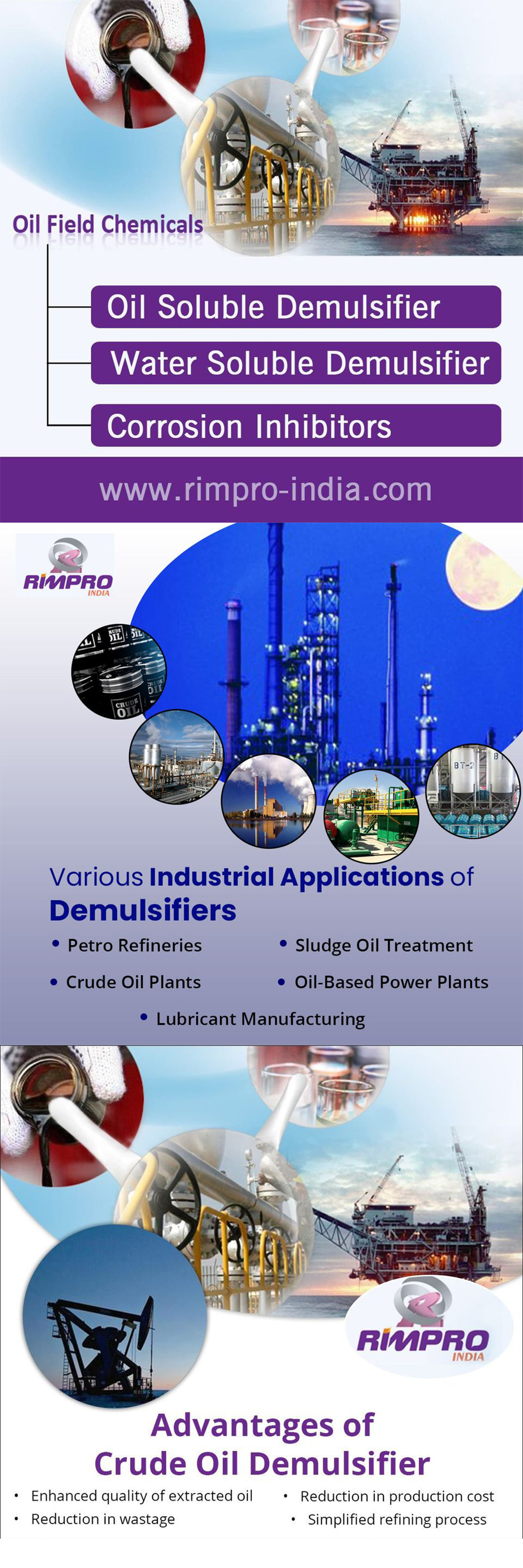 Menu
Menu
How Demulsifiers Are A Boon To Oil Refineries?
Demulsifiers or emulsion splitters are a class of chemicals that are employed in the separation of emulsions, such as water in crude oil. They’re generally used in oil processing in refineries, which is usually produced together with a significant amount of saltwater.
This water and salt have to be separated from the crude oil before refining. If most of the water and salt isn’t eliminated, substantial corrosion drawbacks can arise in the process of refining.
Demulsifiers are based on this chemistry:
- Acid-catalyzed phenol-formaldehyde resins
- Polyamines
- Base catalyzed phenol-formaldehyde resins
- Di-epoxides
- Epoxy resins
- Polyols
- Polyethyleneimines
- Dendrimer
Demulsification is the separation of the emulsion of crude oil into water and oil stages. Through a processing perspective, only three parts of demulsification interest the refinery:
- The speed or rate that this separation occurs
- Quantity of water the oil has left once separated
- The separated water’s quality for disposal
A fast separation rate, crude oil low residual water value, and a low level of oil in the discarding water are naturally desirable. The oil produced must generally meet the specifications of the refinery and pipeline.
For instance, oil transported from wet crude oil terminals mustn’t carry beyond 0.2 percent suspended solids and water and 10 lbs. of salt for a thousand crude oil barrel. This requirement depends on the specifications of the refinery and pipeline.
In oil, the salt isn’t soluble and combined with leftover water in the pre-treated crude. A minimal level of salt and BS&W is needed to lessen corrosion and salts deposition.
In refineries, the primary objective is to eliminate mineral salts out of the oil beforehand to prevent them from causing corrosion or other adverse effects on refinery equipment. To remove the salt from crude oil, this is done by using freshwater to desalt or wash the oil.

Methods of Emulsion Splitting or Demulsification
The separation of an emulsion into oil and water involves the destabilization of emulsifying films around water droplets. This process is performed with one or a combination of the following techniques:
- Addition of chemical demulsifiers
- Intensifying the emulsion’s temperature
- Application of electrostatic fields that stimulate coalescence
- Reduction of the flow velocity, which enables the gravitational separation of oil, water, and gas. This is achieved generally in substantial amount separators and desalinators
Demulsification processes are application-specific due to the large variety of crude oils, brines, chemical demulsifiers, separators, and product specifications.
In addition, emulsions and terms change gradually, which further increase the treatment’s complexity. A common method for treatment of emulsion is the use of heat and a suitable chemical demulsifier to foster destabilization, along with a subsiding time with the electrostatic grids to stimulate separation gravitationally.
Chemical selection
The choice of accurate demulsifier chemical is essential to emulsion breakage. The chemical selection process is still considered more of an art than a science.
Demulsifier chemicals comprise of these elements:
- Dissolving agent (solvent)
- Surfactant
- Flocculants
Dissolving agent, like toluene, benzene, alcohols with short-chain, xylene, and solvent naptha, are common carriers for demulsifiers active agents.
Some solvents alter the natural emulsifier’s solubility conditions (for example, asphaltenes) that accumulate at the interface of oil/brine.
These solvents melt the native surfactant into the mass phase and influence the interfacial film’s properties, which can accelerate coalescence and separation of water.
Surfactants are chemicals with properties of surface-active agents that are characterized by values of the hydrophilic-lipophilic balance.
The value of a reduced HLB applies to the water-soluble surface-active agent. Generally, the water-in-oil emulsion is stabilized by natural emulsifier’s display an HLB level ranging 3 to 8.
Consequently, emulsifiers having a higher HLB range disrupt these emulsions; these acts by entirely or partially displacing the native stabilizing components of the interfacial film surrounding the droplets of water.
This shift also causes a modification in properties like versatility or interfacial gelatinousness of the protective film, which increases destabilization. Sometimes, demulsifiers function as a surfactant and alter the stabilizing particle’s wettability, which leads to emulsion film brak-up.
Flocculants are chemicals that modify water droplets and stimulate coalescence.
Functions of Demulsifiers
The elements contained in a demulsifier mixture can be distinguished in line with their main function; a treater or a dropper. Also, some constituents can work efficiently in other required performance aspects, and some compounds can deliver an all-purpose hybrid result in a specific crude oil.
Treaters
These compound’s basic role is to flocculate the multitude of submicronic water-droplets scattered around the oil. Droplets of water are condensed at the oil column’s base before coalescence, and the crude oil is desiccated beyond the aggregated water droplet’s subsiding level. This becomes evident by the lightening of the surface oil.
Droppers
These compound’s function is to merge droplets of water and discharge unrestricted water.
Hybrids
The hybrids compounds in a demulsifier combine both features exhibited by a treater and dropper. For some applications, employing the use of a hybrid mixture may be more effective.

Selecting the Precise Demulsifier
It’s important to know that using an effective treatment demulsifier is based on some factors and not on the demulsifier’s strength. Provided that the emulsions aren’t stable, a demulsifier will be effective. Should the stability level be high, then it will be difficult for the effect of the demulsifier to take place.
There are some factors to determine the stability of an emulsion and the strength of the demulsifier. They are:
- Properties of the Crude Oil (Chemical and Physical)
- The temperature at which the production takes place
- The turbulent flow between the separator and the reservoir
Detecting the precise chemical blend that can be used to get the best demulsifier treatment requires time. Using ‘bottle test’ can determining the right chemical mixture.
Crude Oil Bottle Test
This is a process involving the addition of various demulsifiers into sample bottles containing emulsions of crude oil. This is used to identify the most effective demulsifier that can break, or separate, it into oil and water.

